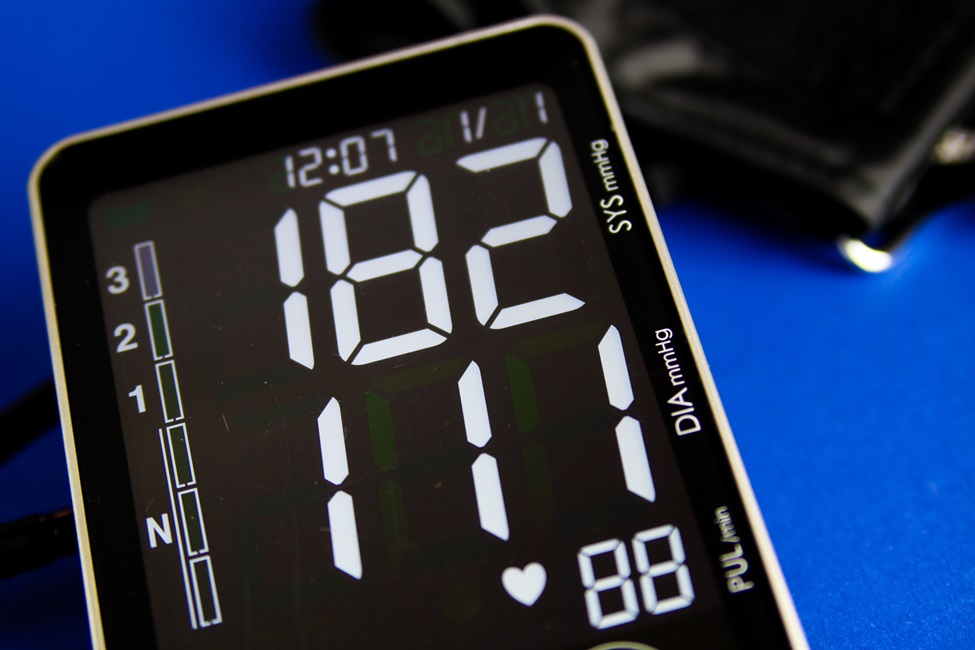Uncontrolled Hypertension: The Old ‘Silent Killer’ is Alive and Well

Healthy individuals should have a systolic blood pressure of 130 mmHg or less, and a diastolic blood pressure of 80 mmHg or less.
In the United States and worldwide, cardiovascular disease is the leading avoidable cause of premature death and disability. Primarily heart attacks and stroke, cardiovascular disease accounts for more than 900,000 annual deaths nationally and about 10 million deaths globally.
Uncontrolled hypertension or high blood pressure is a major risk factor for stroke and heart attacks. Prevention and management of cardiovascular disease involves therapeutic lifestyle changes such as diet and exercise and adjunctive drug therapies of proven benefit.
In a commentary published in The American Journal of Medicine, researchers from Florida Atlantic University’s Schmidt College of Medicine and colleagues alert health care providers that the old “silent killer” is alive and well.
“Health providers should be aware that uncontrolled hypertension is one of the most common, serious and increasing conditions in their patients,” said Stacy Rubin, M.D., senior author and an assistant professor of medicine, FAU Schmidt College of Medicine. “Health providers urgently need to control blood pressure and should be mindful that sudden cardiac death accounts for 50% of deaths from cardiovascular disease and is the first symptomatic event in about 25% of cases. Moreover, for 76% of stroke patients, the initial presenting symptom is the stroke itself.”
The authors note that controlling hypertension is effective and, at least in theory, straightforward. Before the Hypertension Detection and Follow Up Program, a landmark study conducted in the 1970s in the U.S., only about 50% of patients were aware of their high blood pressure. Of those, only 50% were actively treated. Of that group, only 50% received effective treatment. Therefore, only one-eighth of all patients were effectively treated.
Today, these figures show that 54% are aware of their high blood pressure, 40% are actively treated and 21% are actively controlled. Guidelines have been developed in many countries worldwide and all tend to emphasize the need for strict control. According to the latest guidelines from the American Heart Association and the American College of Cardiology, healthy individuals should have a systolic blood pressure of 130 millimeters of mercury (mmHg) or less, and a diastolic blood pressure of 80 mmHg or less.
“With these latest definitions, hypertension affects about 45% of the U.S. adult population,” said Panagiota “Yiota” Kitsantas, Ph.D., co-author and professor and chair of the Department of Population Health and Social Medicine, FAU Schmidt College of Medicine. “Another clinical challenge is metabolic syndrome, which includes central adiposity, high triglycerides, low high-density lipoprotein cholesterol, elevated fasting blood glucose and hypertension.”
The authors caution that metabolic syndrome is a chief risk factor for heart attacks and stroke in the U.S., which is the heaviest society in the world.
“For patients with metabolic syndrome, we believe that angiotensin converting enzyme or ACE inhibitors or their more potent next generation drugs, the receptor blockers, are the first drug of choice,” said Charles H. Hennekens, M.D., Dr.PH., co-author, and corresponding author, the first Sir Richard Doll Professor of Medicine, senior academic advisor, and a professor of preventive medicine in the Department of Population Health and Social Medicine, FAU Schmidt College of Medicine. “These drugs have beneficial effects on heart attacks, stroke, and kidney disease, another major consequence of untreated hypertension.”
Making positive lifestyle changes like losing weight, being more physically active, and cutting down on salt intake has been shown to be beneficial for managing blood pressure. For those whose blood pressure is above 130/80, a combination of these lifestyle changes along with medications can safely and effectively lower blood pressure. Medications are typically started for individuals whose pressure remains above 140/90 despite these lifestyle changes.
The authors suggest that both health providers and patients should be aware of the variability of blood pressure from day-to-day and from morning to night. As such, effective treatment is complicated by the health provider’s need to produce an algorithm to each of their patients. In addition, the patient must take an active role in monitoring their blood pressure. For this reason, the American Heart Association and the American College of Cardiology recommend the Omron blood monitor, which is used to measure blood pressure levels at home.
“Health providers should counsel their patients to check their blood pressure each morning and night and whether to administer a particular drug or its dose, which should be adjusted accordingly based on the average of three readings taken about five minutes apart,” said Hennekens. “While uncontrolled hypertension remains alive and well in the U.S. and worldwide, strict attention to these issues by health providers has the potential to ‘kill the old silent killer.’”
Co-authors are Barry R. Davis, M.D., Ph.D., professor emeritus of biostatistics and data science, University of Texas – Houston School of Public Health; Jared Greenwald, a high school and pre-medical student; John Dunn and Alexandra Matarazzo, both second-year medical students at FAU; and Katerina Benson, a second-year pre-medical student at FAU.
Hennekens served as principal investigator (PI) of the Coordinating Center for the landmark National Heart Lung and Blood Institute (NHLBI) funded Trials of Hypertension Prevention multicenter randomized trials for both phases I and II. Davis served as PI of the Coordinating Center for the landmark NHLBI funded Anti-Hypertensive and Lipid Lowering to Prevent Heart Attack multicenter randomized trials.
-FAU-
Tags: medicine | faculty and staff | research